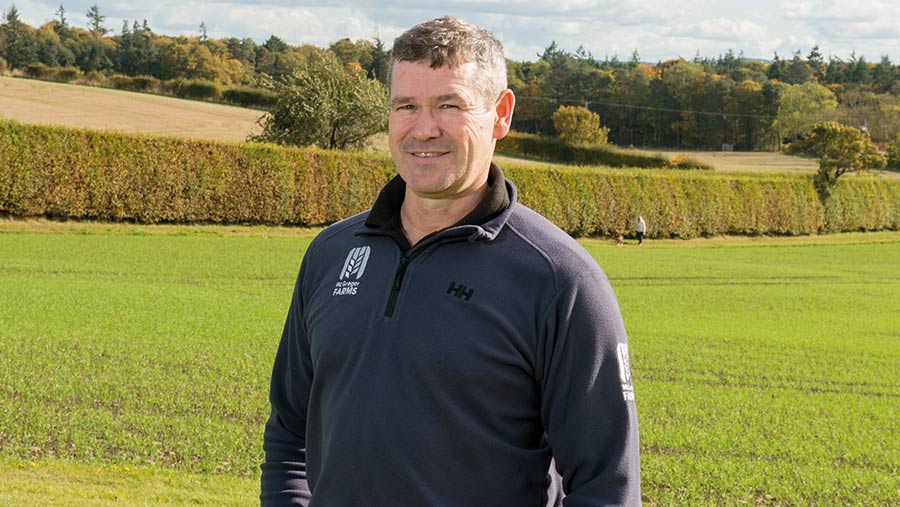Farmer Focus: Pressure builds to get spring crops drilled
 © Angus Findley
© Angus Findley March turned into a rather damp squib, neither coming in like a lion nor as a lamb, just what seemed like endless days of sunless, grey skies with enough rainfall to keep the drilling team parked up.
Despite some progress, the infield “jobs to do list” has expanded considerably. The pressure to get spring crops in the ground is certainly building.
See also: Groundswell launches new regen farming event in Scotland
With only a few spring beans in the ground in March, it was a relief when conditions improved in early April, allowing us to start drilling the first batch of vining peas under our management.
Hopefully, spring oats and barley will follow in the not too distant future.
Brighter days were spent spraying the oilseed rape with a fungicide for light leaf spot with a trace element mix of magnesium, boron and molybdenum.
Light leaf spot has been very prevalent this winter with leaf samples sent to Bayer’s Spot Check being returned with more than 80% of leaves infected.
Quite alarming when there are very few spray days available.
Thankfully, we had liquid fertiliser applications to fall back on, keeping the sprayers moving when crops were too wet to apply any sprays.
One of the many advantages of liquid fertiliser over solids is the ability to apply them in damper weather.
Our Yara N-sensor ALS2 nitrogen sensors allow application on damp grey days as they can suppress the effects of light reflectance from wet leaves, allowing us to accurately vary nitrogen rates across the crops in most conditions.
Perhaps the biggest concern is the lack of days suitable for rolling the winter wheat crops that we didn’t manage to roll in the autumn.
We farm some ground with reasonably high stone content and if left unrolled there will be an increased risk of damaging combines.
With damp soils and winter wheat racing away, it’s looking like a hand-picking job now.


